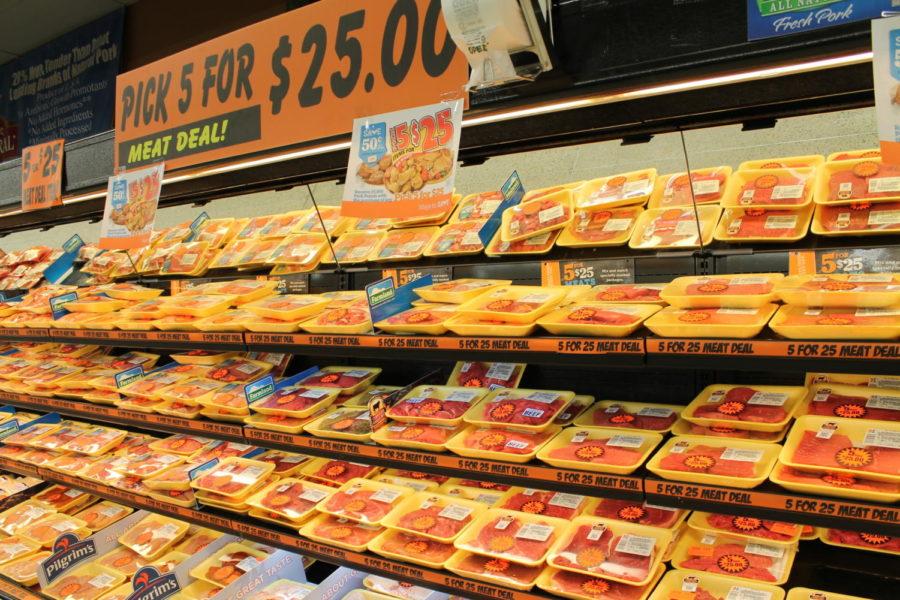New food rules require labeling country of origin on meat products
In reaction to the new rules, major meat producers have argued that the new rules would be costly to implement and would reduce the demand for meat from other countries. The rules do not affect domestic meat products.
December 12, 2013
According to the Federal Register, a new rule requires meat producers to specify the place where the livestock was born, raised and slaughtered.
Major meat producers have argued that the new rules would be costly to implement and would reduce the demand for meat from other countries. A suit filed against the rules taking effect was denied by a U.S. District Court in Washington.
“I am not opposed to the rules as such,” said James Dickson, professor of animal science at Iowa State. “The concerns I have about the labeling rules is that I am not sure how much they’ll help the consumer.”
Dickson said labeling might be tricky for multi-component food products, like frozen meals, which have products from different places. The new rules would not have an impact on domestic meat products.
Countries dealing in livestock, including Canada, could put in place trade barriers and restrictions. A consumer might misinterpret information about the multiple origins of the food product, Dickson said.
He said current rules state that production and processing standards for imported foods are equivalent to products made in the United States.
“Before a company can export products to the U.S., the FDA has to do an inspection of the processing facility. The processor also has to notify the FDA of any exports to be sent,” Dickson said.
The country of origin labeling rules were set in place for unprocessed meat products with the farm bill in 2002. The law was expanded in 2008 to include fresh fruits, nuts and vegetables. Canada approached the World Trade Organization in 2009 arguing that the rules were inconsistent with the organization’s agreement.
“We feel this [rule] provides necessary transparency when consumers are deciding to buy something raised in the U.S. or something raised, slaughtered and processed in a number of different countries before coming into the U.S.,” said Colin O’Neil, director of government affairs at the Center for Food Safety in Washington.
The meat industry has expressed concern over the cost of this rule which requires tracking livestock and meat products.
O’Neil said the required information is being retained within the food supply chain and technology can help to deal with the cost to make it available to the consumer. This would make it possible for consumers to know more about the origins of their food.
O’Neil said meat companies are fighting with the new provisions as they want to outsource their operations and escape regulations. He pointed out that less than 2 percent of the total food imports were physically examined by last year. The rest of the imports were electronically screened.
“Should any food safety risks arise, consumers can make a decision whether or not they want to take any risks. This also ensures companies and producers in other countries that are producing products that consumers want to buy rather than consumers are forced to buy,” O’Neil said.

















